10 New Features Coming to Windows 10
The changed interface known as Modern UI, the decision to discard the “Start” menu and numerous other gaffes and blunders in Windows 8 has earned itself the record of being the Windows version with the slowest adoption rate in its history. So it’s all eyes on Windows 10 to take back some of the glory lost.
Windows 10 is built to work across a wide range of devices; phone, tablet, TV, Xbox, as well as Microsoft’s very own wearable device, Hololens. There are plenty of improvements, new features, new interfaces, and a much-needed new browser.
I’ve been using Windows 10 for a while now through their Windows Insider program. And here are 10 key features I found most exciting to share about.
1. New Start Menu
The Start menu is finally back(!) with an overhaul that converges the classic desktop with the Modern interface. At least, this time, it is a familiar design. It appears at the left corner of the screen, like in Windows 7, showing a list of your most frequently used applications with a menu to find all of your installed applications, sorted in alphabetical order.
On top of that, you will find an extra panel, similar to Windows 8, where you can pin favorite apps for quicker access. You can drag the start menu to resize the panel to contain more apps. The apps can be arranged in a group, and the icons can be resized and set to be static or alive.

If you are used to the Windows 8 way of life, Microsoft provides the option to display the Start menu in full screen. This can be enabled through the Start > Settings > Personalization > Start then turning on the Use Start full screen option.
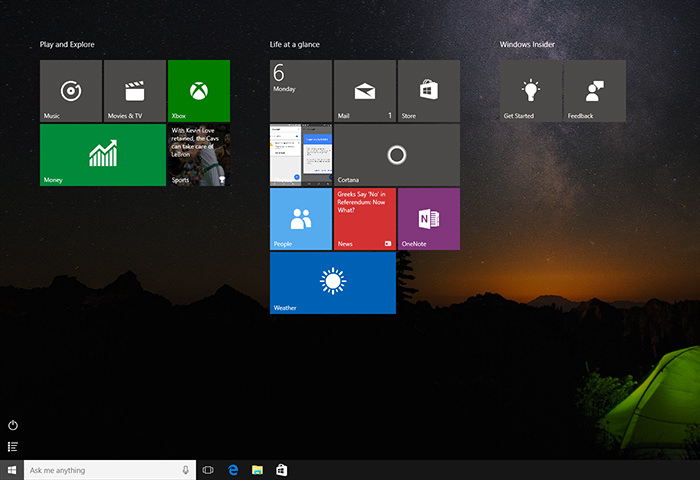
2. New Window
File Explorer (which was known as Windows Explorer), as well as the app windows, have been improved. Some apps will have a color that matches the app’s brand identity, while a few apps comes with dark- and light-mode windows. Mobile apps get an additional button to push the window full screen, as if they were in a mobile device.

The Snap View is still there, with some slight enhancements. In Windows 10, you can now display the app at half of the screen or a quarter of the screen (by dragging the app to the corner of the screen).
As you have snapped the first app, Windows 10 will show you all other active apps in thumbnails, allowing you to switch or “snap” to the next app quicker. It’s also a feature found in OS X but only with the most recent version, El Capitan. Now, if only Microsoft could provide the option to switch the scrollbar off like in OS X.

3. Multiple Desktops
Windows 10 comes with the Multiple Desktop mode, a feature which users of Linux and OS X (it’s called Spaces there) had been enjoying for some years.
To create a new Desktop in Windows 10, click the Task View icon (two overlapping rectangles) in the taskbar or press the Windows + Tab keys. Then, click the New Desktop button at the bottom right of the Task View.
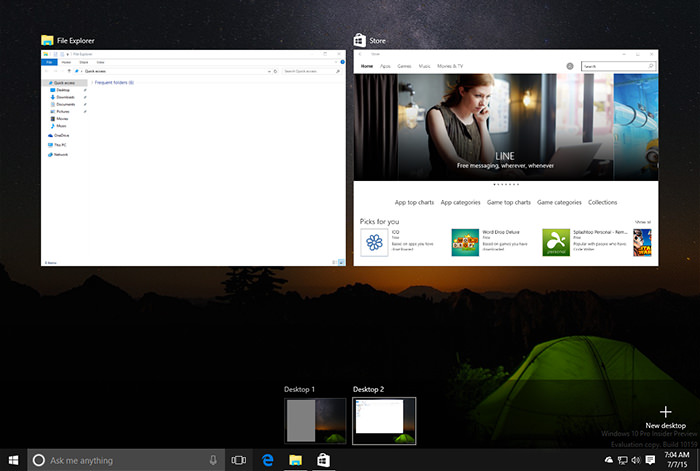
You can have unlimited desktops for grouping or arranging different apps. You can move apps through the Desktops by drag-and-drop as well. The full screen app, however, will not be treated as a new Desktop, unlike in OS X. Also, the active apps will only appear active in the Taskbar of the Desktop where the app is opened.
4. Hey Cortana!
Cortana is Microsoft’s answer to Siri and Google Now – it is a personal digital assistant. Cortana could help you manage tasks such as organizing schedules, reminding you of an important event, giving suggestions based on your preferences, and even reply emails. You can also search files, folders, and apps with it much like the Spotlight feature in OS X.
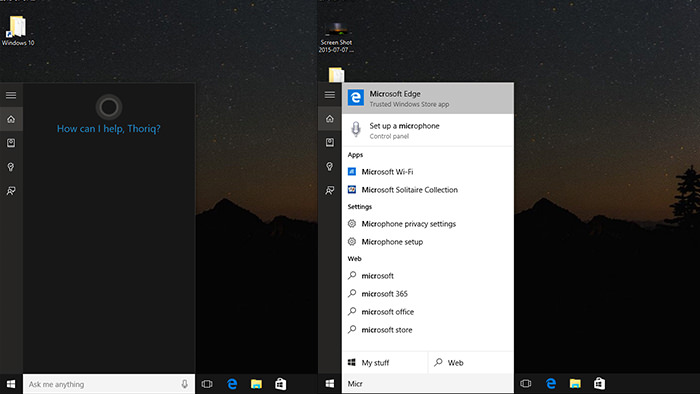
Previously Cortana was only available in mobile devices. But with Windows 10, Microsoft brings Cortana to the desktop as well. You can now wake Cortana up with a voice command: Hey Cortana! or simply hit the Speaker button on the Taskbar if that is more convenient to you
At the time of this writing, Cortana "speaks" English, Spanish, French, Chinese, Italian, and German, keep in mind that it might not be available in all regions just yet.
5. Microsoft Edge
What was previously known as Project Spartan became Microsoft Edge, which is a good name although not unique — the same could be said of its logo. Nonetheless, Microsoft Edge is far more capable and than its predecessors in many aspects, which is what we are more interested in.
Edge has nicer, sleeker interface. The window has two color modes, Light and Dark, which can be switched through Settings. Edge is integrated with Bing and Cortana to deliver an interactive experience. As you type in the address bar, it will show you a list of keyword suggestions; typing “weather in Chicago" will immediately show the weather forecast in the city; AAPL will return the current stock price of Apple.
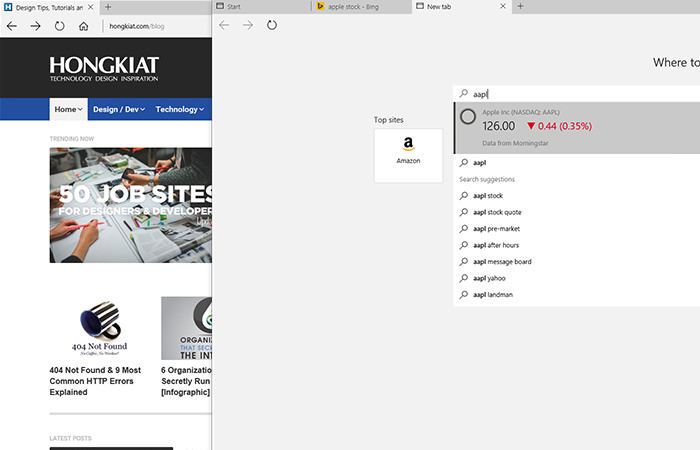
Under the hood, Edge uses a new rendering engine called EdgeHTML, replacing Trident which was used in Internet Explorer. This new engine allows Edge to run faster and render web pages more consistently by leaving behind all the bottlenecks that are of Internet Explorer’s legacy.
Plus, we will finally be able to install third-party extensions like in Chrome and Firefox.
6. Action Center
For those of you who come from Windows 7, the Action Center is there but only limited to computer updates and security type of notification. In Windows 10, the Action Center has been upgraded to adjust to our modern digital worldly needs, where information flow in an endless stream.
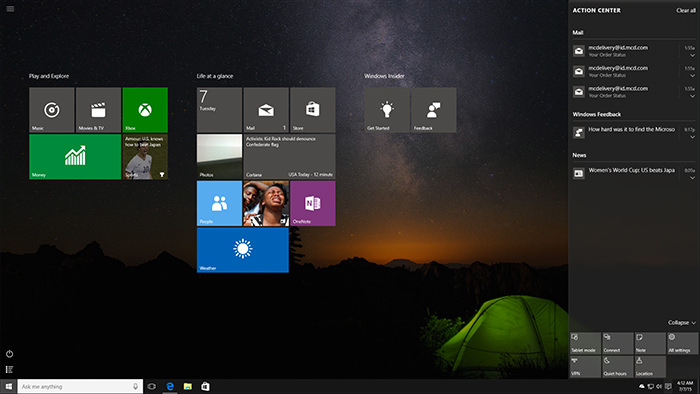
You can now find anything you might have missed like emails, news, calls, texts, and software updates. You can also access shortcuts to your PC Settings. The Action Center can be accessed through the bubble talk icon at the bottom right side of the Taskbar.
7. Universal Apps
Microsoft is on a mission to unify their ecosystem with Universal Apps. With Windows 10, Developers now can now write a single codebase that could run and scale in a phone, a tablet, and even a Hololens.
As a result, this would decrease the cost and the time investment to build an app for Windows. Mail, Calendar, Calculator, Music, and Photo are a few examples of Universal Apps shipped with Windows 10. You can also install phone and tablet apps installed from Windows Store and use it like a desktop app.
8. Continuum
Continuum, not to be confused with Continuity, is a feature designed for a hybrid device, like Surface, to allow a seamless shift from desktop to tablet mode. But, you can also activate the tablet mode on a regular desktop in case you prefer the tablet experience.
In the Action Center, click the Tablet Mode shortcut. Once you enter the tablet mode all apps turn full screen including File Explorer. Continuum also works on Windows Phones. By connecting your phone to a a screen or a PC you can have the full experience of a PC, and use apps in your phone like in a regular desktop with a keyboard and a mouse.
9. Say Hello to Windows Hello
Windows Hello is a unique feature coming to Windows 10. It is a new, additional way to sign-in to Windows 10 aside from using a password, PIN or picture. Windows Hello works by recognizing your face and fingerprint (for laptops that have a scanner) and allows you to login to your PC by "looking" at your face (with a camera).
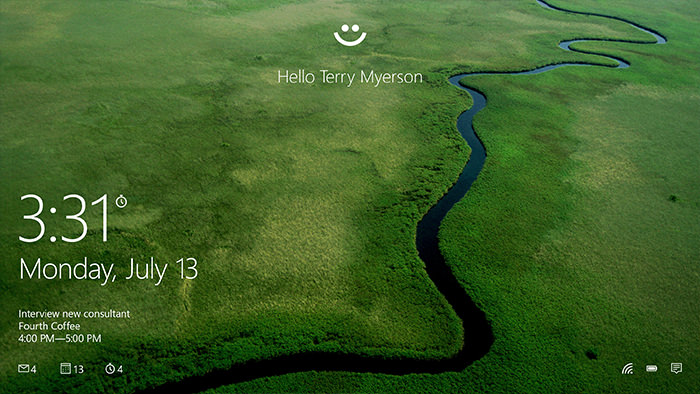
Upon setup, animated eyes will appear on the lock screen looking around to find you.
10. More Capable Command Prompt
Compared to Linux or OS X’s Terminal, the Command Prompt for Windows is an antique, stuck in the 80s. You cannot, for example, select the text and perform copy and paste.
Luckily for Windows users, in Windows 10, the Command Prompt has undergone a number of improvements. You can now select lines, text, drag-and-drop folders or files to reveal their location path.
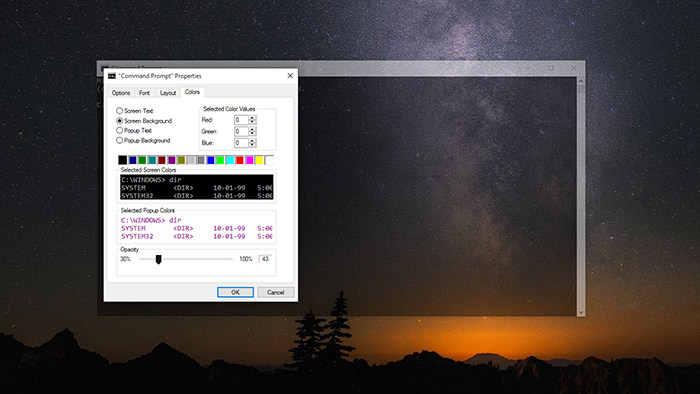
You can also change the color and adjust the windows transparency. All new options can be found in the Command Prompt Properties.